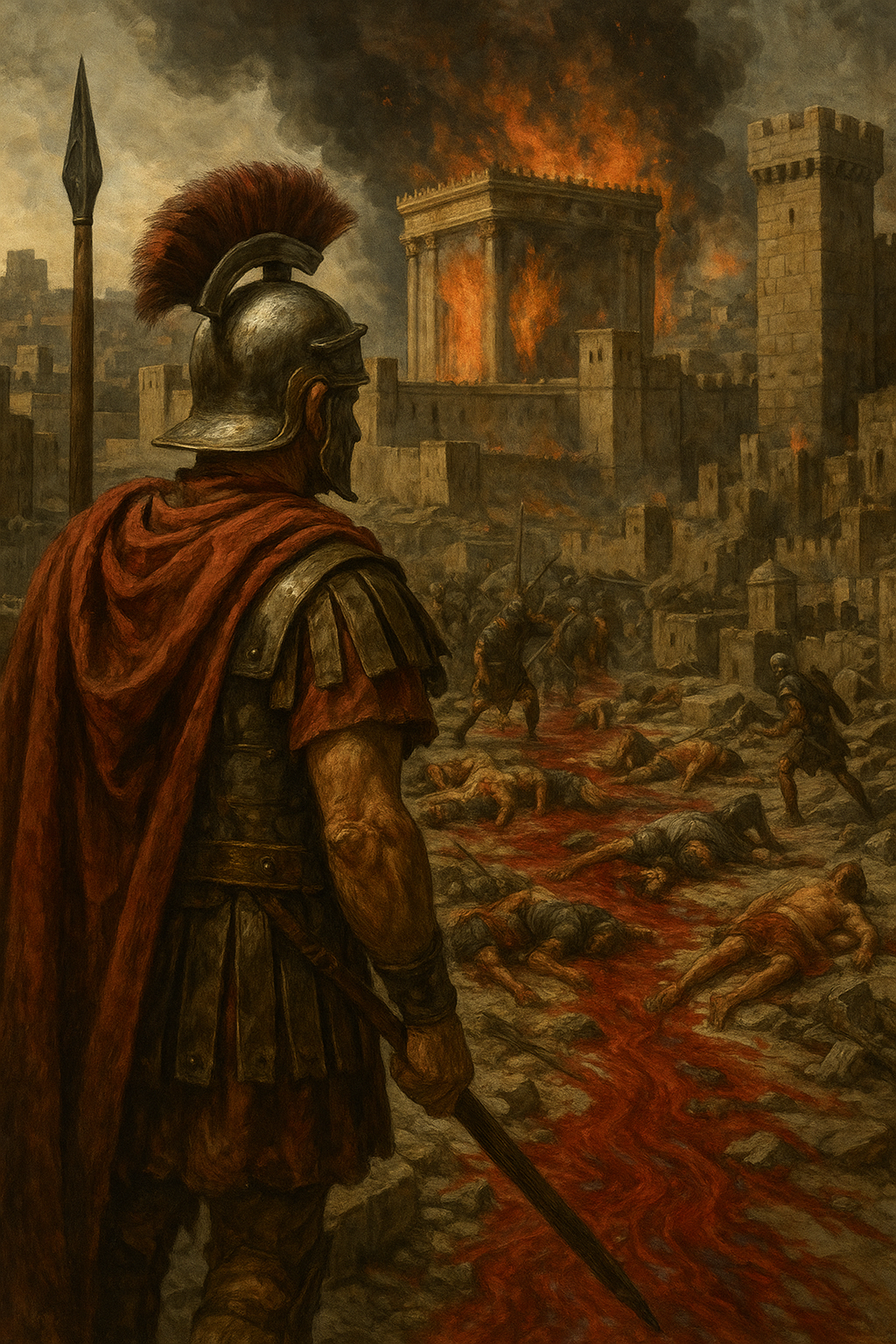70 AD: The Tribulation Foretold by Christ
Introduction
The destruction of Jerusalem in 70 AD stands as one of the most sobering and significant events in biblical history. It is not merely a footnote of Roman conquest but a fulfillment of divine prophecy spoken by Christ Himself. According to preterist scholars, the Olivet Discourse (Matthew 24, Mark 13, Luke 21) and key visions in Revelation point directly to this catastrophic judgment upon apostate Israel. This article examines the biblical foundation, historical corroboration, and theological significance of that event as the fulfillment of what many today misinterpret as a future global tribulation.
The Olivet Discourse: Prophetic Precision
Jesus’ prophetic sermon on the Mount of Olives (Matthew 24; Luke 21; Mark 13) outlines signs of judgment that would come upon “this generation” (Matthew 24:34). Jesus warns of wars, famines, earthquakes, and a great tribulation unlike anything seen before (Matthew 24:21). These warnings culminate in His explicit reference to the desolation of the temple: “not one stone will be left upon another” (Matthew 24:2).
Luke 21:20 adds clarity: “But when you see Jerusalem surrounded by armies, then know that its desolation has come near.” This isn’t abstract future symbolism—it’s geographically and historically specific. Christ’s audience would experience the events He predicted within their own lifetimes.
Historical Fulfillment in 70 AD
In AD 66, tensions between the Jews and Rome erupted into open revolt. In response, Emperor Vespasian dispatched his son, General Titus, to quell the rebellion. After a brutal multi-year campaign, Jerusalem fell in AD 70. The Roman legions besieged the city, burned the temple to the ground, and slaughtered hundreds of thousands.
The Jewish historian Flavius Josephus, an eyewitness to the siege, records horrific scenes of suffering. One of the most shocking episodes involves a mother named Mary, driven to madness by starvation, who killed and cannibalized her own infant son. She roasted and consumed half the child, offering the rest to astonished looters who recoiled in horror. Josephus recounts this in The Jewish War (Book 6, Chapter 3, Section 4):
“She then said to them, ‘This is mine own son, and what hath been done was my own doing…’”
This atrocity is not only historically documented but prophetically foreshadowed in Scripture. Moses warned in Deuteronomy 28:52–53 that, if Israel broke covenant with God, devastating sieges would come:
“They shall besiege you in all your towns… and you shall eat the fruit of your womb, the flesh of your sons and daughters… in the siege and in the distress with which your enemies shall distress you.”
This same warning is echoed in Lamentations 4:10 following the Babylonian destruction of Jerusalem:
“The hands of compassionate women have boiled their own children; they became their food during the destruction of the daughter of my people.”
The siege of Jerusalem in AD 70 fulfilled these horrific prophecies to the letter. Jesus’ words in Matthew 24:21 find their chilling realization in these scenes:
“For then there will be great tribulation, such as has not been from the beginning of the world until now, no, and never will be.”
Revelation and the First-Century Church
The Book of Revelation opens with a striking declaration:
“Behold, he is coming with the clouds, and every eye will see him, even those who pierced him, and all tribes of the earth will wail on account of him.” (Revelation 1:7)
This verse clearly harkens back to the crucifixion—those who pierced Jesus were alive at the time of John’s writing. This aligns with the preterist view that Revelation was written before AD 70 and that it primarily addresses coming judgment on Jerusalem. The phrase “coming with the clouds” is apocalyptic language borrowed from the Old Testament (e.g., Isaiah 19:1), often used to describe divine judgment through human agents—in this case, Rome.
Dispensational vs. Preterist Interpretations
Dispensational theology, popularized in the 19th and 20th centuries, teaches that the tribulation is a future, global period of suffering under a coming Antichrist. According to this view, the church will be raptured before a seven-year tribulation, after which Christ will return to establish His kingdom.
Preterism, by contrast, holds that many prophetic passages—especially those concerning tribulation—have already been fulfilled, primarily in the events leading up to and including AD 70. Rather than encouraging escapism or speculation, preterism anchors the believer in historical reality and Christ’s present reign.
Conclusion: A Warning and a Witness
The destruction of Jerusalem was not merely a tragic event—it was the outworking of divine prophecy and covenantal judgment. It vindicated Christ’s warnings and established the end of the Old Covenant era. The fall of the temple marked the triumph of the New Covenant, where Christ reigns not from a physical temple but from heaven, and His people become the temple of God.
Rather than looking anxiously for a coming tribulation, believers are called to recognize the victory of Christ in history and advance His kingdom with hope. As the writer of Hebrews exhorts:
“Since we are receiving a kingdom that cannot be shaken, let us be thankful.” (Hebrews 12:28)

Leave a Reply